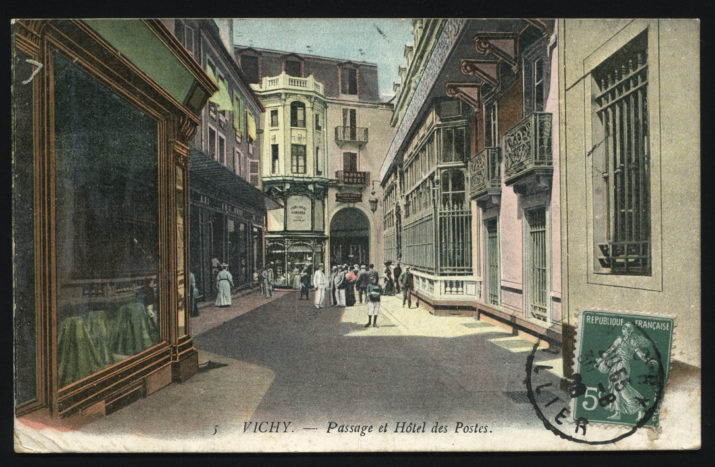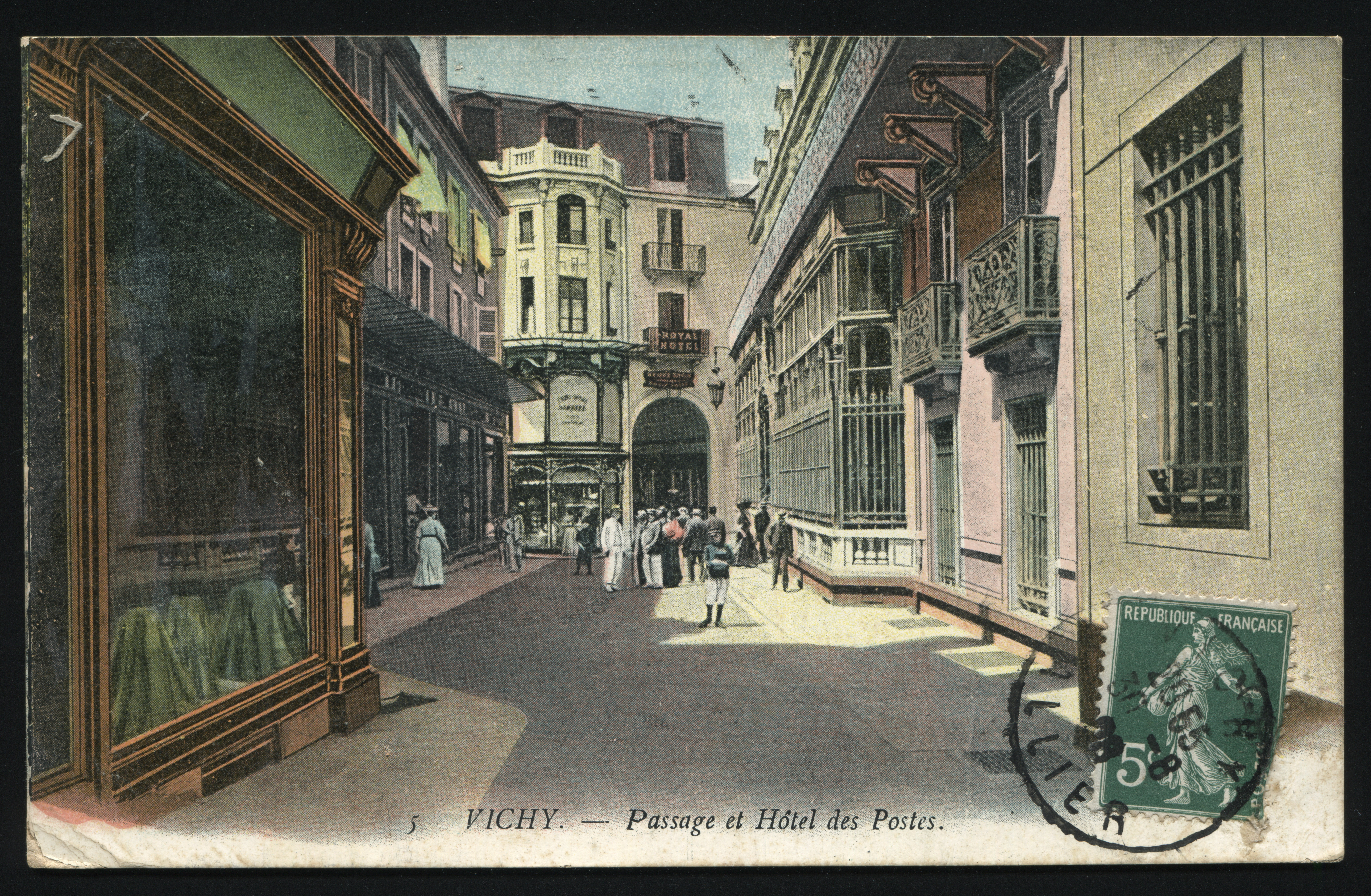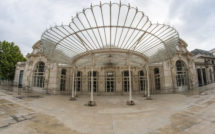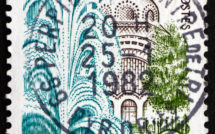

This is part of a roundtable, Author-Meets-Critics: Vichy contre Vichy, Une capitale sans mémoire by Audrey Mallet
To today’s casual visitor, Vichy seems an attractive, prosperous provincial French town. One of Europe’s most celebrated spas, it has enjoyed a long and largely prosperous past. It’s hot springs were discovered by the Romans in 52 BC. The town that grew up around the springs was called Aquis Calidis, or “Hot Waters.” Through subsequent centuries, that name evolved with the town. The name it goes by today dates from the fourteenth century. In the sixteenth century, King Henry IV created the General Surintendency of Baths and Fountains of the Kingdom. Shortly thereafter, the first thermal bathing establishment, the Maison du Roy, was constructed at Vichy. In the seventeenth century, regular visitors to the baths included the Marquise de Sévigné, the famous epistolary chronicler of life at the court of Louis XIV, who suffered greatly from rheumatism.
In the nineteenth century, Vichy’s prosperity increased dramatically. Seeking to enhance the fortunes and visibility of France’s thermal sites and make them the rivals of their German counterparts, Emperor Napoleon III ordered the expansion and modernization of the town. He called for the construction of a train station to bring in increasing numbers of visitors. The population of Vichy, 787 inhabitants in 1812, reached 6,000 inhabitants in 1873 and 10,500 inhabitants in 1889. At the beginning of the twentieth century, the thermal establishments themselves were refurbished. The Grand Etablissement Thermal, whose external architecture was byzantine in inspiration, and whose interior design followed a symbolist aesthetics, was inaugurated in 1903. Around this central building sprang up luxury hotels and villas. In the eighteenth century there were five hotels in Vichy, but by 1910 there were 140 hotels. There were also hundreds of luxurious villas to welcome the town’s wealthy clientele. To entertain the ever-increasing number of spa guests who visited Vichy annually (approximately one hundred thousand at the outset of World War I) the town constructed an elegant casino, to which was later added an opera house. Vichy’s opera house regularly welcomed internationally renowned conductors, musicians, and performers. In 1930, Vichy was “at the summit of its glory.” One hundred to two hundred thousand spa guests visited the town annually. In addition to the hundreds of hotels and villas in place to accommodate the town’s guests, Vichy boasted forty-eight jewelry stores, thirty-two stylish boutique clothing stores, twenty-three shoe stores, eighteen-f0ur stores, forty-eight grocery stores, and forty-five butcher shops. (10)
If—like those French villages surrounding Verdun that were totally obliterated during the fighting there in World War I—Vichy had somehow been erased from the map before summer 1940 and the stunning French defeat at the hands of Nazi Germany, it would in all likelihood be remembered for its prosperity and political innocuousness. But that is not what happened. Centrally located, well known for its hospitality, and offering a great deal of comfortable, not to say luxurious living quarters, Vichy was chosen that summer by the recently formed collaborationist régime to be the new seat of the French government. In Vichy’s famed casino, the representative assembly of the French Third Republic voted itself out of existence, granting full powers to the head of the newly established French State, Marshall Philippe Pétain.
With the arrival of the government, the French administration, the diplomatic corps, and multiple representatives of the Nazi government (who established their own, fortified quarter of the town) the population of Vichy exploded. By the fall of 1940, some 120,000 people lived in and around the town, more than five times as many people as had resided there before the summer. Pétain established his residence at the Hôtel du Parc. His ministers resided in the surrounding hotels and villas. He lived like a king. Crowds gathered regularly outside his hotel just to catch glimpses of his comings and goings. For some, Pétain was a demi-god. Inside the hotel luxury boutiques, like the one of Henry Vuitton—a fervent Pétainist who created propaganda objects for the regime—served wealthy ministers and their wives.
The citizenry of wartime, Vichy was largely Pétainist, or at worst attentiste (“fence sitters”) until the very end of the war. There were good reasons for this. The professions of most of the townspeople had long consisted of serving out-of-town guests, and government workers simply replaced the erstwhile spa guests. In addition, given proximity and daily contact with government officials, friendships between the latter and the townspeople sprang up. For the members of Vichy’s haute bourgeoisie it was an honor to rub elbows with the new regime’s elite. Even resistance groups were largely pro-Petainist, believing at the time and, in some cases, even after the war, the myth that Pétain was “double dealing,” secretly helping the cause of the Resistance while protecting France from the excesses of the Nazis. Indeed, Pétain was the “shield” to Charles de Gaulle’s “sword,” the historian Robert Aron later wrote.
But there was also a much darker, more sinister, and indeed murderous side to life in wartime Vichy that did not take long to emerge. Vichy’s anti-Jewish statutes in 1940 and 1941 made clear the regime’s fundamental anti-Semitism, and expulsions of foreign Jews who had sought refuge in the town were not long in coming. On the latter score, Vichy was far worse than many other French municipalities. With the implementation of the Nazi Final Solution, deportations of French as well as foreign Jews began. The toll in Vichy was particularly high. Between 1941 and 1943, the number of Jews residing in Pétain’s capital fell by seventy percent. More specifically, in 1940 several thousand Jews resided in Vichy. In 1943, the number was down to six hundred. By 1944, only a “hand-full” remained.
Late in the war, with Germany’s defeat apparent and with internal resistance growing, the Pétainist regime hardened its line. At Hitler’s urging, Pétain authorized the creation of the Milice. A fascist and anti-Semitic paramilitary organization, the Milice was as brutal (if not more so) as the Gestapo, already housed at the Hôtel du Portugal. Along with the Gestapo, the Milice persecuted and participated in the deportations of Jews and Resistance members. Like the Gestapo, the Milicealso offered handsome sums for denouncing Jews and revealing Resistance arms caches. Not surprisingly, townspeople “allowed themselves to be tempted” (69) and readily denounced their Jewish and Resistance neighbors. Despite being aware of these crimes, most of the townspeople of Vichy remained staunch supporters of Pétain until summer 1944, when the Germans forcibly took the old Marshall with them back to Germany as they retreated.
This is only part of the story Audrey Mallet recounts in her richly informative Vichy contre Vichy: Une capitale sans mémoire. As the book’s title suggests, Mallet also deals with the troubled—and troubling—memory of Pétain’s capital in the postwar years. In the process, she adds a dimension to the story which is often overlooked by historians as well as the general public: Vichy’s equally problematic past during decolonization and the Algerian war. In the late 1950s and 1960s, Vichy, which had long served as a summer vacation and “recovery” spot for French colonizers, or pieds-noirs, became a headquarters of sorts for staunch and even fanatical defenders of Algérie française. These included the head of the OAS, General Raoul Salan, who favored the Hôtel Royal when in Vichy, and who is now buried in the town. They also included the future leader of the Front National Jean-Marie Le Pen, who got his political start in opposing the liberation of Algeria. Last, but not least, Robert Faurisson, France’s most famous Holocaust denier arrived in Vichy in the late 1950s. At the time, he was an obscure French literature professor and fanatical supporter of Algérie française. The choice of Vichy for the pro French Algeria militants was natural enough because, as Mallet points out, “many indicators demonstrate that the townspeople of Vichy were clearly in favor of the preservation of Algérie française.” (179)
But if, as Mallet writes, the name “Vichy” has been “hijacked” and has become synonymous with compromise, treason, and even crimes against humanity rather than simply the name of a prosperous provincial town, this is not due to its Algérie française moment. It is because Vichy served as the capital of the French State for four years, and those four years, up until very recently at least, have been a seemingly endless source of national shame. Indeed, the memory of the Dark Years sent shock waves through the decade of the 1990s. It triggered political scandal after political scandal, trials on charges of crimes against humanity against two Frenchmen who worked for Vichy and the Nazis, dramatic revelations about the dubious pasts of well know public figures, the publication of novels and release of films about the period, and so on. By decade’s end, the Dark Years—“Vichy”—had become a seemingly “unmasterable past” for the French, akin in many ways to the weight of the Nazi past in postwar Germany.
In Vichy contre Vichy, Audrey Mallet does not deal with the larger, national memory of the Dark Years, but instead hones in on the often dubious ways in which the townspeople of Vichy have tried to exculpate themselves from the sins attributed to their town—and therefore to them. The techniques employed include the denial of responsibility for what happened, the celebration of an “alternate” past, or simply a collective—and often deliberate—amnesia. On the first score, Dumas notes that, officially as well as unofficially, the position of most townspeople is that they did not invite the Pétain regime to town, it was thrust on them. Like the rest of France, they were also the “victims” of the French State and Nazi Germany. This of course ignores the benefits and glory (at the time) of being the nation’s capital, as well as the townspeople’s widespread support, and even adulation, of Pétain. As for the celebration of an “alternate past,” Mallet stresses the town’s official efforts to link itself to the Gaullist legacy through ceremonies and commemorations, even though the evidence belies their purported Gaullism. And despite the town’s complicity in supporting the regime and its institutions, including the Milice, this did not prevent these same townspeople from excesses and violence against representatives of the latter organization during the early days of the postwar purge, or Epuration. As for the town’s collective amnesia, Mallet notes that as part of erasing the World War II past, the town now celebrates its more glorious—and untainted—past under Napoleon III, an effort supported by the architecture of the town itself. As for telling evidence of their close involvement with the Germans, a poll taken in the 1990s revealed that the townspeople had already “forgotten” reminders of their former presence in the town. A staggering ninety-five present of the population believed that the Hôtel de Portugal, the wartime headquarters of the Gestapo, was just an “ordinary building.”
For those who visited Vichy in the 1990s, this statistic is sadly revealing. In 1999, when a grant from the US National Endowment of the Humanities allowed a colleague and I to take twenty-five American professors to Vichy to tour the town and study buildings and landmarks from its World War II past, there were few visible traces of that past anywhere. Moreover, an elderly woman from Vichy, who followed the group as our French guide pointed these sites out, finally accosted him and told him he should be ashamed as a Frenchman to do what he was doing. “Let the past alone,” she said. This is of course one anecdotal experience. Nevertheless, many in the group felt that Vichy seemed sinister precisely because the other townspeople we encountered apparently wanted to focus exclusively on a happy and prosperous present and avoid the past. While this is understandable in human terms and certainly for the generations of townspeople born after the war, the willful amnesia it underscored certainly justifies the subtitle of Mallet’s book: “A Town without Memory.”
A larger issue that Vichy contre Vichy implicitly raises but does not address is: how should any people (and not just the French people) deal with a lieu de mémoire, or “place of memory” that recalls a traumatic past whose hold on the present never completely dissipates? Unlike statues of Confederate heroes that could be found throughout the American south and have recently, and controversially, been removed from public parks and other locations as painful reminders of slavery, Vichy as a town cannot be wiped from the map. Nor can its meaning, its complex reality, be summed up and circumscribed in one of France’s ill-fated “memory laws,” that officially defined traumatic events and moments of the past in simplistic and moralistic terms. But, perhaps paradoxically, this is a good thing. Despite Vichy’s own efforts to forget its World War II past, the existence, and complicated past of the town and what it represents are reminders that the work of memory and history is never done. Vichy contre Vichy makes a valuable contribution to both.
Richard J. Golsan is University Distinguished Professor in the Department of International Studies and Senior Scowcroft Fellow, the Bush School at Texas A&M University. His most recent book is The Vichy Past in France Today (Lexington Books, 2016) and he is currently writing a history of the 1987 trial of Klaus Barbie. He is Editor of South Central Review.
Photo: postcard printed by France shows vintage France postcard Vichy, circa 1910 | Shutterstock
Published on November 15, 2019.




